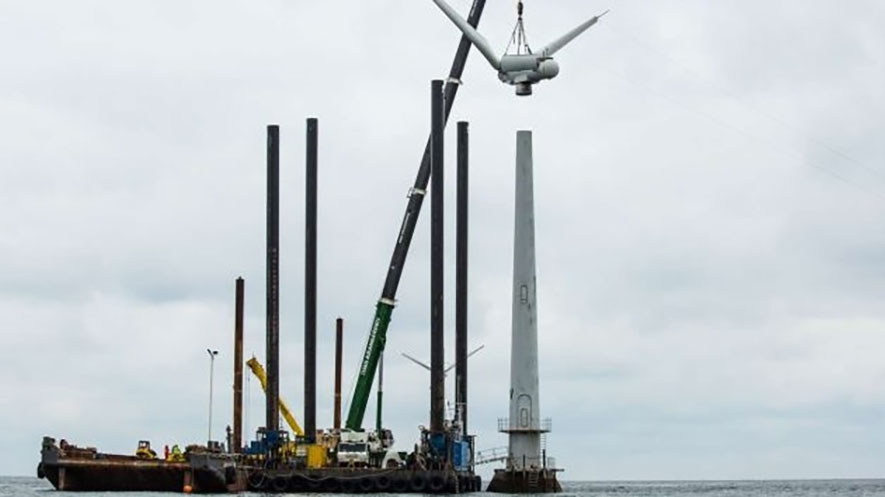Today, offshore wind is a recognized and proven renewable energy technology, and offshore wind turbines harvest the energy from the wind, transforming it into green power for millions of households. But it was only 25 years ago that the world’s first offshore wind farm was constructed close to shore in the low waters off Vindeby near Lolland in the south east of Denmark.
Vindeby Offshore Wind Farm, consisting of 11 offshore wind turbines, was connected to the grid in 1991. After more than 25 years of service, DONG Energy – owner and operator of the wind farm – has now decided to decommission Vindeby Offshore Wind Farm. But even though the wind farm is now being decommissioned, and even though the Vindeby turbines are small compared to current standards, they have been of vital importance for the industry.
Since the birth of Vindeby, offshore wind farms have reached utility-scale, and a single one of the largest turbines available today produces more power than the entire Vindeby Offshore Wind Farm. Vindeby Offshore Wind Farm has covered the annual power consumption of around 2,200 households. In comparison, DONG Energy’s future offshore wind farm off the east coast of England, Hornsea Project One, which when ready for commissioning in a few years will be the world’s largest offshore wind farm, will be able to supply green energy to approximately one million households.
The turbines at Vindeby are located 1.5-3 km offshore. Today, offshore wind turbines are typically located much farther away from shore. Hornsea Project One is setting a record as the 174 offshore wind turbines will be located 120 km offshore where strong winds ensure a high level of power production.
When the wind turbines at Vindeby were installed, they were lifted into place in one piece. Beginning in March 2017, the blades, nacelle and tower will be dismantled and taken down individually by a mobile crane on board a jack-up vessel. The concrete foundations will be broken down on site, mainly by hydraulic demolition shears, and collected afterwards. All wind turbine components and foundations will be sent onshore to Nyborg Harbour where the components will be reused as much as possible as spare parts for other wind turbines. Some of the blades will become part of a research project at DTU Risø while others will be reused in an innovative noise barrier concept. One wind turbine will also become part of the exhibition at ‘Energimuseet’ (the Danish Museum of Energy). Components that are not immediately reusable will be transported to a certified recovery company. During its lifetime, Vindeby has produced 243GWh of power. This corresponds to what seven of the largest offshore wind turbines today can produce in a single year. The turbines for Vindeby were supplied by Bonus Energi, now Siemens Wind Power, and the foundations were produced by MT Højgaard.





